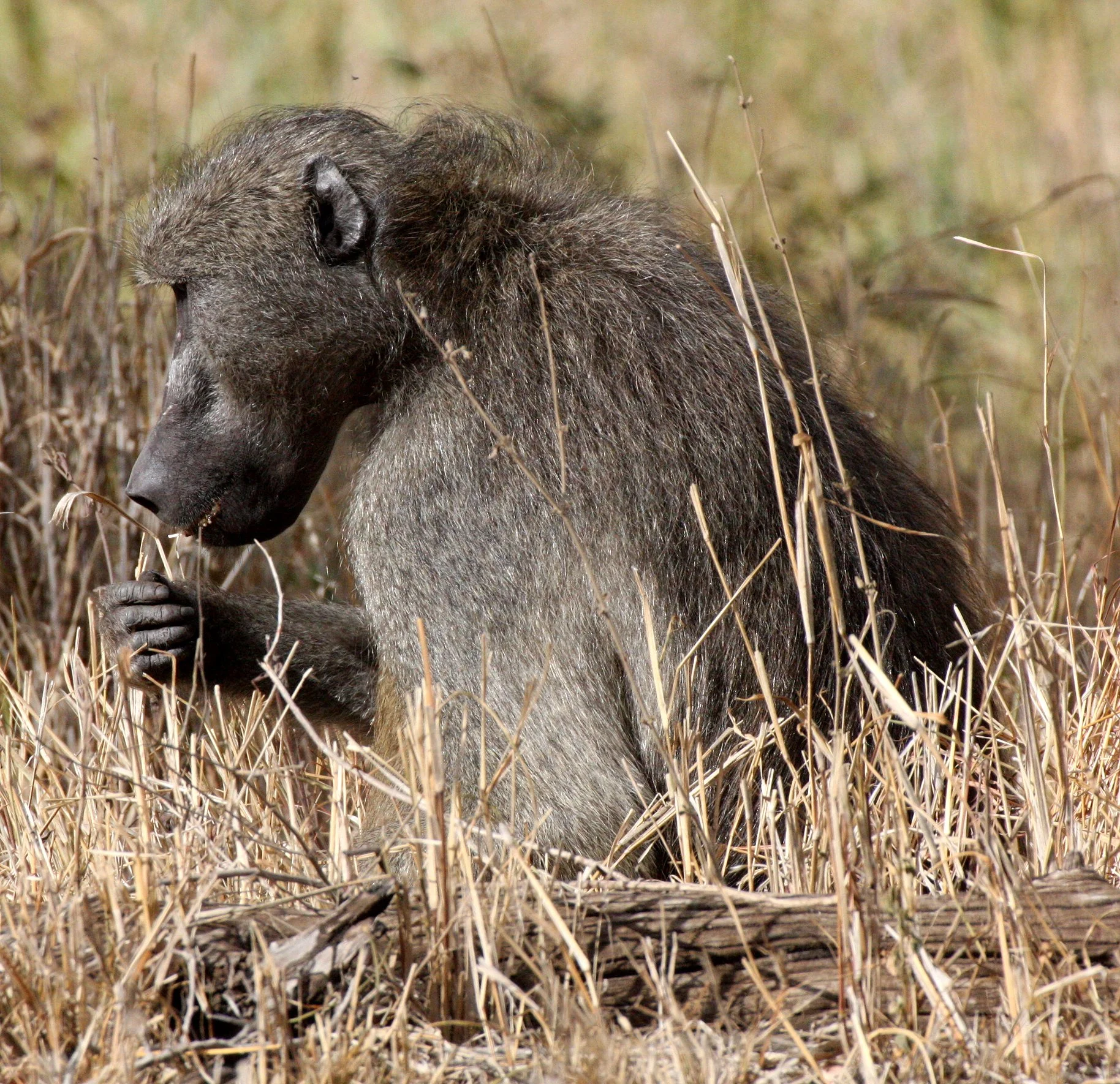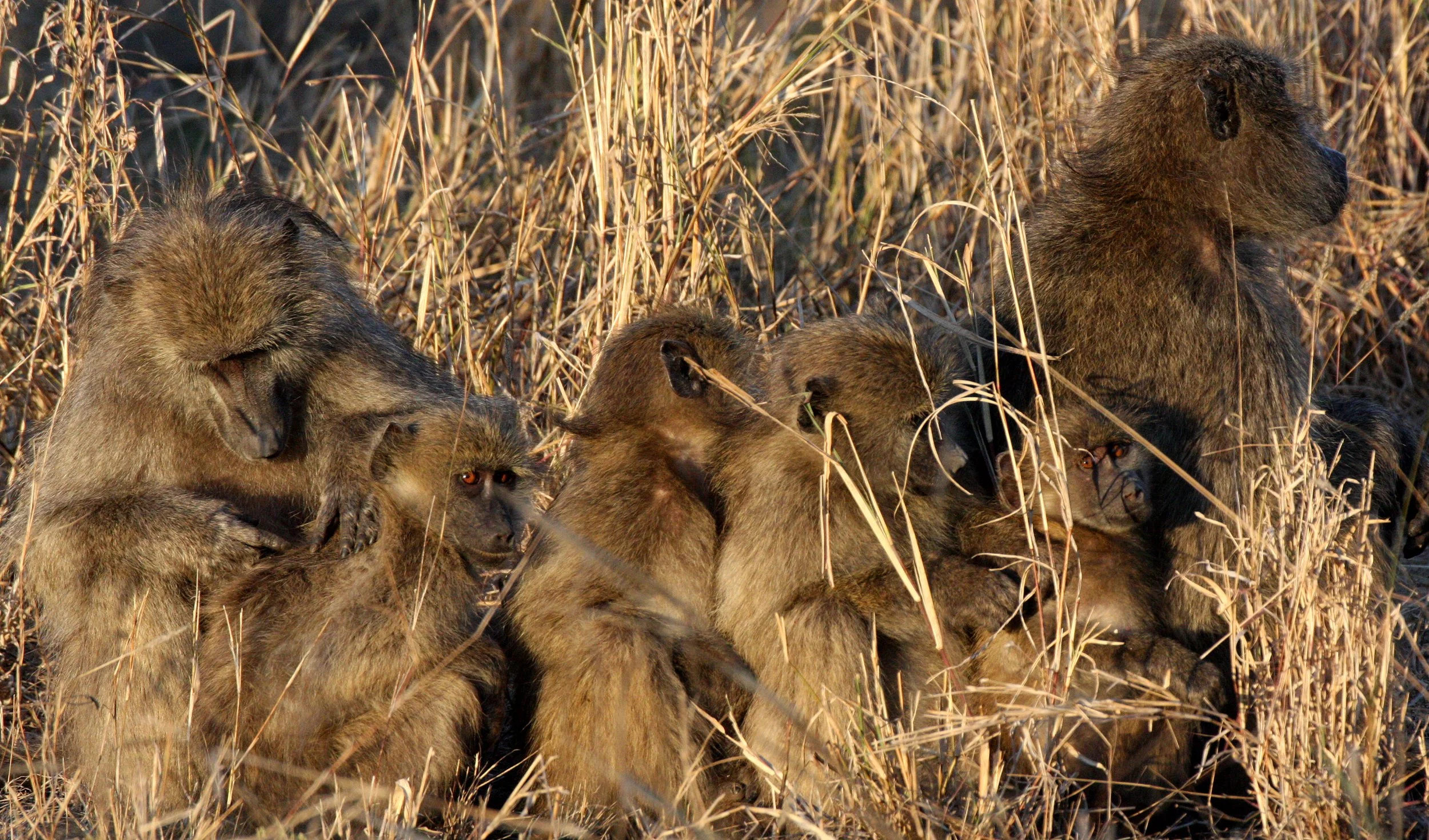
Chacma Baboon
The chacma baboon (Papio ursinus), also known as the Cape baboon, is, like all other baboons, from the Old World monkey family. It is one of the largest of all monkeys. Located primarily in southern Africa, the chacma baboon has a wide variety of social behaviours, including a dominance hierarchy, collective foraging, adoption of young by females, and friendship pairings. These behaviors form parts of a complex evolutionary ecology. In general, the species is not threatened, but human population pressure has increased contact between humans and baboons. Hunting, trapping, and accidents kill or remove many baboons from the wild, thereby reducing baboon numbers and disrupting their social structure.
Due to hybridization between different baboon (Papio) populations across Africa, authors have occasionally grouped the entire radiation as a single species, the hamadryas baboon, Papio hamadryas. Arbitrary boundaries were then used to separate the populations into subspecies. Other authors once considered the chacma baboon a subspecies of the yellow baboon, Papio cynocephalus, although it is now recognised as a separate species, Papio ursinus. The chacma baboon has two or three subspecies, depending on which classification is followed. Grubb et al. (2003) lists two subspecies, while Groves (2005) in Mammal Species of the World listed three. This article follows Groves (2005) and describes three distinct subspecies. In the Grubb et al. (2003) paper, P. u. raucana was believed to be synonymous with P. u. ursinus.
Papio ursinus ursinus Kerr, 1792 – Cape chacma (found in southern South Africa)
P. ursinus griseipes Pocock, 1911 – Gray-footed chacma (found in northern South Africa to southern Zambia)
P. ursinus raucana Shortridge, 1942 – Ruacana chacma (found from Namibia to southern Angola, but not accepted by all authorities as distinct.
The below gallery has images of Papio ursinus ursinus from South Africa in various locations.

















































































Damaraland Chacma Baboon (Papio ursinus ruacana) Damaraland Namibia



Chacma Baboon (Papio ursinus griseipes) Chobe National Park Botswana























